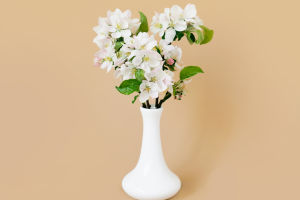Philodendron is a common indoor ornamental plant that plant lovers love for its beautiful leaves and easy care.
This plant belongs to the Araceae family, a shade-tolerant plant native to tropical rainforests.
Because they do not require much light and have a strong adaptability to temperature and humidity, Philodendron has become an ideal choice for many homes and offices.
There are many varieties of Philodendron, and the most common types are climbing and upright. Climbing Philodendron, such as Philodendron hederaceum, grows on surrounding objects through aerial roots and is often used to decorate walls or shelves.
Upright Philodendron, such as Philodendron bipinnatifidum, has large leaves and a unique shape and is often used as a large indoor potted plant. These different types of plants have become an indispensable part of interior design with their unique leaf shapes and elegant postures.
Philodendron plants have a variety of leaves, from heart-shaped to lobed, and different varieties show different visual effects. They also have various leaf colors, from classic dark green to variants with white or yellow markings.
Because of this variety, Philodendron can add vitality and layering to the space, whether it is placed in a minimalist living room or a verdant balcony, it can add a touch of natural vitality to the overall atmosphere.
Philodendrons are relatively simple to maintain. It is like a humid environment, but it is not tolerant of waterlogging, so control the watering frequency to ensure that the soil remains moist but not too wet.
They are not demanding in terms of light and can grow well in semi-shaded or diffused light conditions, which makes them more handy in indoor growing environments.
Even in low-light environments, Philodendron can still maintain healthy growth. However, if they can provide a moderate amount of diffuse light, they will grow faster and their leaves will be brighter and more lush.
Philodendrons are extremely tenacious in indoor plant maintenance. These plants can survive with low maintenance and require less fertilizer. During the growing season, some liquid fertilizers can promote leaf growth.
In winter, the frequency of fertilization can be reduced to adapt to its relatively slow growth rhythm. For climbing Philodendron, you can shape it into your favorite shape by pruning and guiding its growth direction.
Philodendron is not only a highly ornamental plant but also has a certain air purification function. Studies have shown that Philodendron can absorb harmful substances in the air, especially common indoor pollutants such as formaldehyde and benzene.
Therefore, placing Philodendron in the home can not only beautify the environment but also provide a certain improvement in indoor air quality. This feature also makes them highly respected in the promotion of environmentally friendly design and healthy living concepts.
Philodendron is a houseplant that combines beauty and practicality. Their diversity, adaptability, and shade tolerance make them a popular choice in home gardening.
Whether you are new to plants or an experienced gardening enthusiast, Philodendron can bring a touch of greenery to your living space while allowing you to feel the power and beauty of nature.


